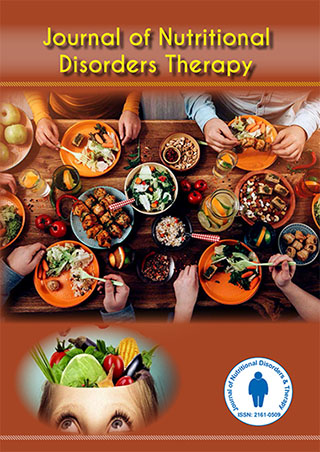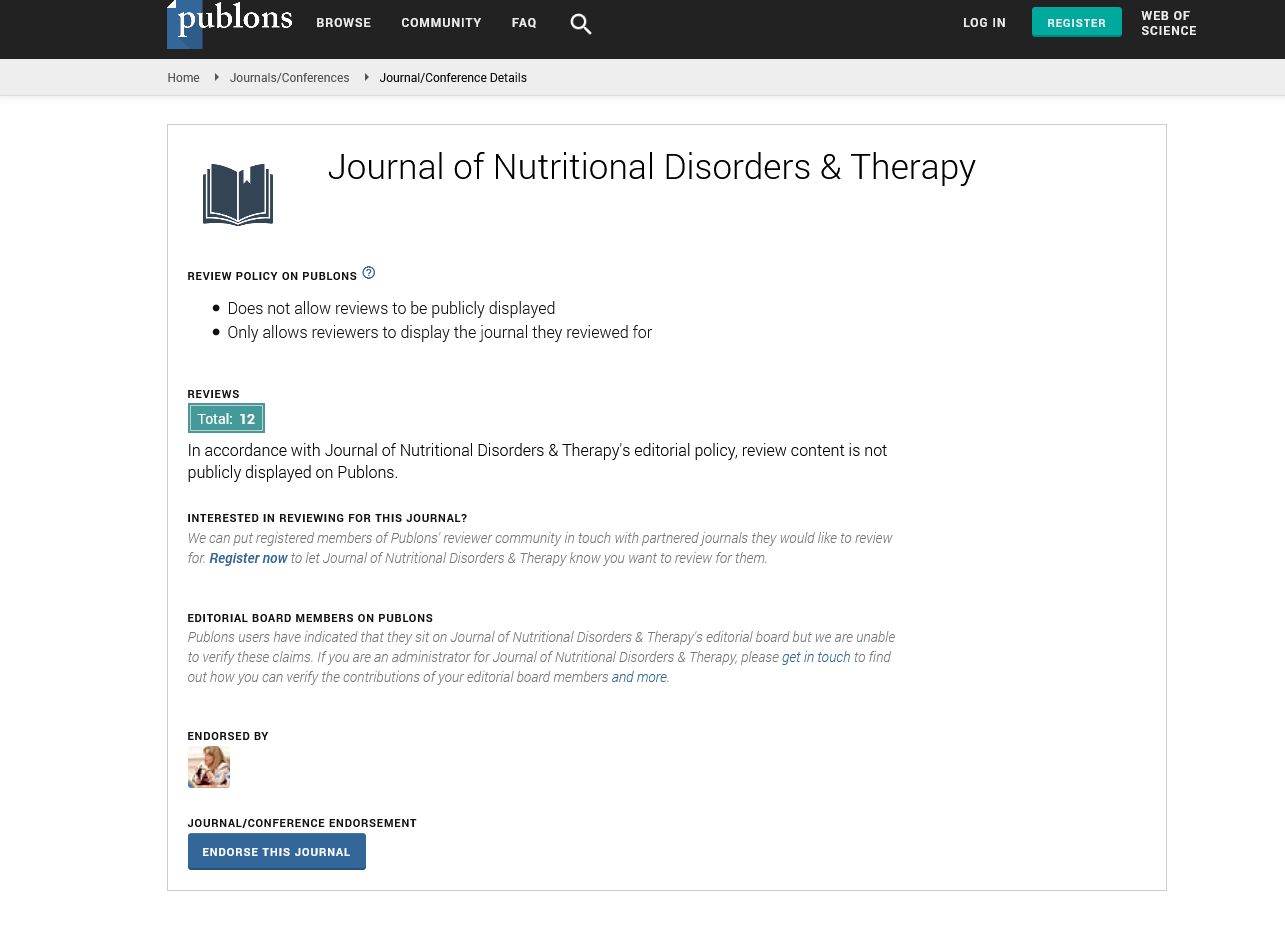Indexed In
- Open J Gate
- Genamics JournalSeek
- Academic Keys
- JournalTOCs
- Ulrich's Periodicals Directory
- RefSeek
- Hamdard University
- EBSCO A-Z
- OCLC- WorldCat
- Publons
- Geneva Foundation for Medical Education and Research
- Euro Pub
Useful Links
Share This Page
Journal Flyer

Open Access Journals
- Agri and Aquaculture
- Biochemistry
- Bioinformatics & Systems Biology
- Business & Management
- Chemistry
- Clinical Sciences
- Engineering
- Food & Nutrition
- General Science
- Genetics & Molecular Biology
- Immunology & Microbiology
- Medical Sciences
- Neuroscience & Psychology
- Nursing & Health Care
- Pharmaceutical Sciences
Perspective Article - (2024) Volume 14, Issue 2
Understanding Nutritional Therapy in the Context of Food Allergies and Sensitivities
Alexander Wainwright*Received: 02-May-2024, Manuscript No. JNDT-24-26220; Editor assigned: 06-May-2024, Pre QC No. JNDT-24-26220(PQ); Reviewed: 20-May-2024, QC No. JNDT-24-26220; Revised: 27-May-2024, Manuscript No. JNDT-24-26220(R); Published: 03-Jun-2024, DOI: 10.35248/2161-0509.24.14.297
Description
Food allergies and sensitivities are increasingly prevalent, affecting a significant portion of the population globally. These conditions, while often conflated, have distinct mechanisms and implications. Food allergies involve an immune response, typically mediated by Immunoglobulin E (IgE), that can lead to severe reactions, including anaphylaxis. In contrast, food sensitivities, often referred to as food intolerances, do not involve the immune system and are generally less severe but can still significantly impact quality of life. Nutritional therapy plays a crucial role in managing both conditions, aiming to prevent adverse reactions, ensure nutritional adequacy, and improve overall well-being. The first step in nutritional therapy for food allergies and sensitivities is accurate identification. This often involves a combination of medical history, elimination diets, and diagnostic testing. For food allergies, skin prick tests, blood tests measuring specific IgE antibodies, and oral food challenges are commonly used. Food sensitivities are more challenging to diagnose and often rely on elimination diets followed by systematic reintroduction of suspected foods to observe for symptoms. Once specific food allergies are identified, the cornerstone of management is complete avoidance of the allergenic food. This requires careful reading of food labels and, often, education on hidden sources of allergens. For instance, individuals with a peanut allergy must be vigilant about cross-contamination and potential exposure in various food products. Nutritional therapy must also address the risk of nutritional deficiencies that can arise from the elimination of certain foods. For example, children with cow's milk allergy may be at risk for calcium and vitamin D deficiencies, which are crucial for bone health. Dietitians often recommend fortified plant-based milk alternatives and other dietary sources of these nutrients to ensure adequate intake. In cases of multiple food allergies, the risk of nutritional deficiencies increases, necessitating a more comprehensive dietary plan. This may involve the inclusion of hypoallergenic formulas for infants or supplementation for older individuals to meet nutritional needs. Regular monitoring and dietary adjustments are essential to prevent malnutrition and support healthy growth and development. Food sensitivities, such as lactose intolerance or non-celiac gluten sensitivity, require different management strategies. Unlike food allergies, complete avoidance of the offending food is not always necessary. Instead, individuals may be able to tolerate small amounts or certain forms of the food. For lactose intolerance, lactase enzyme supplements or lactose-free dairy products can help manage symptoms while still providing essential nutrients like calcium and vitamin D. Similarly, individuals with nonceliac gluten sensitivity can often tolerate small amounts of gluten without severe symptoms, but they may choose to follow a gluten-free diet for better symptom control.
Elimination diets are commonly used to identify and manage food sensitivities. These diets involve removing suspected foods for a period of time and then systematically reintroducing them to identify triggers. This approach requires careful planning and supervision by a healthcare professional to ensure nutritional adequacy and prevent unnecessary dietary restrictions. Beyond preventing adverse reactions and ensuring nutritional adequacy, nutritional therapy for food allergies and sensitivities aims to improve overall quality of life. This involves not only dietary modifications but also education, support, and empowerment of individuals to manage their condition effectively. Education is a critical component of nutritional therapy. Individuals with food allergies and sensitivities need to understand how to read food labels, recognize symptoms of reactions, and know when to seek medical attention. They also benefit from learning how to prepare safe and nutritious meals that avoid their specific dietary needs. Support groups and counselling can also play a valuable role in navigating the social isolation and emotional challenges associated with living with food allergies and sensitivities.
Conclusion
Support groups provide a sense of community and shared experiences, while counselling can help individuals cope with the psychological impact of their condition. The field of nutritional therapy for food allergies and sensitivities is evolving, with emerging therapies and research providing opportunities for individuals affected by these conditions. Oral Immunotherapy (OIT) is a method used to manage food allergies. It involves introducing small amounts of the allergenic food gradually under medical supervision to build tolerance over time. While not yet widely available, OIT has demonstrated efficacy in clinical trials and may become a standard part of nutritional therapy for certain food allergies. For food sensitivities, advances in understanding the gut microbiome are opening new avenues for therapy. Research suggests that gut health plays a significant role in food sensitivities, and interventions such as probiotics, prebiotics, and dietary modifications to support a healthy gut microbiome may help manage symptoms and improve overall health.
Citation: Wainwright A (2024) Understanding Nutritional Therapy in the Context of Food Allergies and Sensitivities. J Nutr Disord Ther. 14:297.
Copyright: © 2024 Wainwright A. This is an open-access article distributed under the terms of the Creative Commons Attribution License, which permits unrestricted use, distribution, and reproduction in any medium, provided the original author and source are credited.

